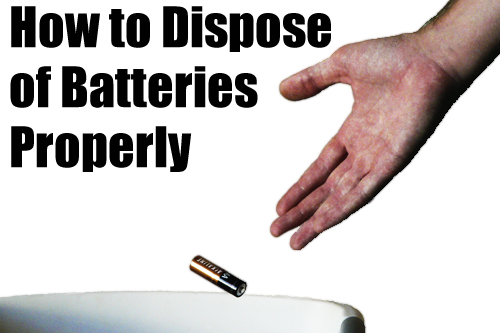Dispose of batteries. More than 200 years ago, Alessandro Volta invented the first battery in the Voltaic column named after him. Today, energy storage devices with ever-higher performance can be found in almost all areas of life. At the end of their life, valuable raw materials are recovered using modern recycling processes.
Table of Contents
From disposal to recycling

Batteries and accumulators contain valuable raw materials, but sometimes also dangerous substances that can harm the environment. To prevent this and able to recover secondary raw materials, old and defective batteries must dispose of separately. The batteries are first sorted and then recycled from the collection points provided in trade, municipalities, and businesses.
Collect and dispose of batteries
Old and defective batteries and accumulators can find wherever batteries sell, e.g., B. in the supermarket, drugstore, electronics, or hardware store, can return free of charge. So-called industrial batteries, such as those used in e-bikes, e-scooters, or photovoltaic systems, can replace by the respective dealers free of charge. The municipal recycling centers also take back old batteries and accumulators. Other collection points can find at commercial end-users.
Caution!
Lithium batteries must secure before disposal for safety reasons, e.g., B. by masking the poles. Batteries contained in electronic devices must dispose of separately from them.
Sort by system
The collected batteries separate according to their electrochemical systems in sorting systems. This is necessary because different recycling processes use depending on the battery system and the contents of the storm. Several process steps use for professional sorting: as a rule, manual pre-sorting takes place first and then automatic separation according to size and electrochemical system. One of the sorting methods uses for this is z. B. the X-ray method.
Recycle and reuse: dispose of batteries
Old batteries efficiently recycle in modern recycling plants, and their components return to the production cycle. Different methods also use here. In electric steel furnaces, zinc and steel recover from alkaline manganese and zinc-carbon batteries. Alkali-manganese and zinc-carbon batteries meltdown in electric arc furnaces. In addition to zinc, glass-like slag and iron-manganese (or ferromanganese), which mainly uses to produce iron alloys, are made. The secondary raw materials are z. B. for the construction of cars (steel), roads (slag), wheelbarrows (zinc), brake discs (iron-manganese or ferromanganese), or cell phones (cobalt, nickel) uses. The recovery of lithium has only recently become possible and is not yet very widespread, but it is becoming increasingly important.
Also Read: How to make tortilla chips



















